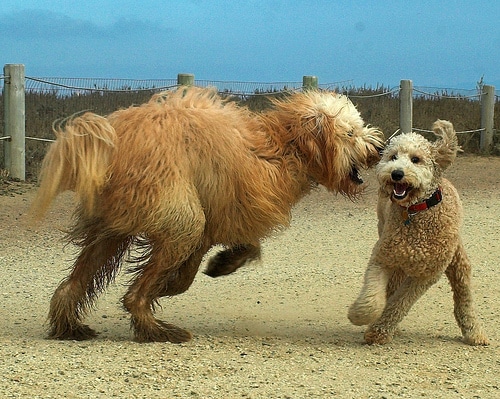Introduction:
Having a dog in your life can bring immense joy, companionship, and unconditional love. However, if you’ve ever returned home to find your favorite pair of shoes or the corner of your couch chewed to shreds, you know how frustrating and disheartening destructive behavior in dogs can be. Fear not! In this article, we’ll explore expert advice, practical tips, and personal experiences to help you prevent destructive behavior in your four-legged friend.
Understanding Your Dog’s Nature:
Before delving into strategies to prevent destructive behaviors, let’s understand the underlying reasons behind them. Dogs, regardless of breed or size, have an innate need to chew. Just like humans use tools or fidget with objects to alleviate stress, dogs find solace and relaxation through chewing. Understanding this behavior is crucial to redirecting their chewing tendencies towards appropriate alternatives.
1. Invest in suitable chew toys:
To avoid Fido mistaking your shoes for chew toys, provide them with a variety of appropriate options. Focus on chew toys made of durable materials, such as rubber or nylon, that are safe for your pup to gnaw on for hours. Engage your dog by playing fetch or “hide and seek” with their chew toys, ensuring they associate positive experiences with these items.
Personal Anecdote: My mischievous Labrador, Max, loved to chew on furniture, especially during his puppy stage. We discovered that giving him interactive puzzle toys and filling them with treats kept him mentally stimulated and deterred him from tearing apart our beloved couch.
2. Temporary confinement and safe spaces:
During periods when you’re unable to supervise your dog, consider using gates or crates to confine them to a safe area. Ensure the space is comfortable and stocked with appropriate chew toys, water, and bedding. This not only protects your belongings but also keeps your furry friend secure and content.
Expert Tip: Remember to never use confinement as a form of punishment. Make it a positive experience for your dog by gradually introducing them to crate training and rewarding them with treats and praise for calm behavior.
3. Engage in mentally stimulating activities:
Dogs are intelligent creatures that thrive on mental stimulation. A lack of mental engagement can lead to boredom and increased chances of destructive behavior. Involve your pup in challenging activities like obedience training, puzzle toys, or scent games that provide the mental workouts they crave.
Real-Life Example: My friend’s Border Collie, Bella, was notorious for destroying her home. However, once Bella started attending scent training classes, her destructive behaviors ceased. The mental stimulation and fulfillment she gained from searching for hidden scents considerably reduced her chewing tendencies.
Positive Reinforcement and Redirecting Behavior:
Positive reinforcement is a key component of effective training. By rewarding desirable behaviors instead of punishing undesirable ones, your dog will learn faster, build trust, and develop a desire to please you.
1. Consistent redirecting and substitution:
When you catch your dog in the act of chewing something off-limits, calmly intervene and redirect their attention to a suitable chew toy. By substituting and praising appropriate behavior, you effectively communicate what is acceptable and what is not.
Personal Experience: My own rescue dog, Lucy, had a habit of making slippers her chew toys. By consistently replacing them with a designated chew toy and enthusiastically praising her for using it instead, she eventually left the slippers untouched.
2. Exercise: A tired dog is a well-behaved dog. Regular exercise sessions, whether it’s a long walk, a game of fetch, or a trip to the dog park, will help burn off excess energy and reduce destructive behaviors driven by boredom.
Expert Tip: If you’re short on time, consider hiring a dog walker or enrolling your pup in a doggy daycare program to ensure they receive sufficient exercise and socialization.
Conclusion:
Preventing destructive behavior in dogs is a matter of understanding their natural instincts, providing appropriate alternatives, and using positive reinforcement. By incorporating expert advice, real-life examples, and personal anecdotes into our journey, we hope to inspire and equip you with the tools needed to establish a harmonious and happy relationship with your furry companion. Remember, with patience, consistency, and a little creativity, you can help your dog navigate their natural instincts in a way that preserves your favorite shoes and promotes a stress-free home. Happy dog parenting!
